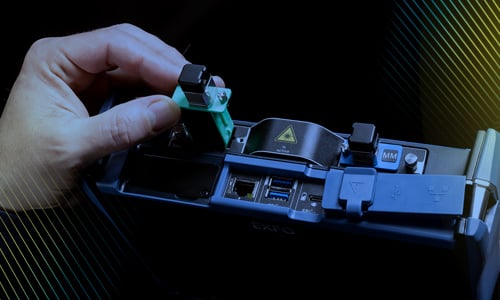PCIA 2012 wireless infrastructure show — First impressions
Earlier this month, I participated in the Wireless Infrastructure Show for the very first time. Within just a few hours of the opening, I was considerably impressed. First, upon witnessing the extent to which wireless communications have penetrated our lives, and second, upon learning how DAS and other small-cell solutions have now become some of the best alternatives for expanding wireless coverage in locations where these technologies were previously out of reach, thus bringing them closer and closer to the end user.
This year’s event was held from October 1-4 in Orlando, Florida, at the Peabody Hotel Conference Centre, and reunited the key players of the North American communication infrastructure industry through a great mix of panel conferences, track sessions and product exhibitions.
The players
As expected, the top broadcast infrastructure providers, such as American Towers, Crown Castle and GTP, were very well represented at the site, as were many system integrators, engineering firms and towers, and DAS and small-cell equipment suppliers. Crown Castle had the biggest booth, located at the entry of the “Small Cell Centre.” From the carrier side, T-Mobile, Verizon Wireless and many other smaller telecom providers participated in the event, but in my opinion, the AT&T Antenna Solution Group really stood out with several very active speakers providing great insights throughout the various conferences and track sessions. Members of the Federal Communications Commission (FCC) brought a valuable governmental and regulatory perspective to the table as well.
Market trends
During the introductory remarks of many of the sessions, presenters paid tribute to the fascinating race to expand wireless coverage driven by the recent explosion of video demand originating from the large number of smart/portable devices deployed in the field. Older technologies like GSM are now in their prime, and as such, carriers are looking for innovative solutions and approaches to deploying newer technologies (such as DAS or small cells) better and faster to deliver this extra coverage as fast as possible to their end user.
The most interesting topics presented included: heterogeneous networks (HetNet), the importance of offloading Wi-Fi networks, wireless spectrum interactions, VoLTE, coordination challenges involving macro vs. micro cells, neutral hosting reality and great In-Building DAS success stories (responding to the whys and wherefores of DAS deployment).
The sessions also touched on trends such as carrier switching from “voice-based” plans to more data-centric offerings with voice included free of charge! And, the “bring your own device”(BYOD) concept, where phone suppliers deliver a unique equipment platform allowing customers to choose their own mobile devices and pair them with the service carrier and technology platform of their choice. It will be very interesting to see where this will lead.
The biggest challenge, which appears quite commonplace, remains how to maintain a consistent and seamless customer experience through this combination of different transmission technologies, end-user devices, carrier network topologies, etc., and how fast carriers can upgrade technologies to support the demand.
EXFO in the DAS
At the end of the two-day seminar, it was clear to me that EXFO has the right solutions to help operators and contractors at many levels throughout the lifecycle of DAS network deployment. Time-to-market is a critical aspect behind DAS implementation, and in addition to helping to improve the quality level of these fiber-based installations and ensuring first-time-successful turn-ups, EXFO can also accelerate the process through solutions that reduce the level of complexity associated with testing and adjusting result interpretations, so that any type of technician can quickly and efficiently complete his or her tasks to get the network on air quickly.
Although this PCIA event appeared rather modest at the outset, it offered a very good overview of the current challenges this industry is facing and clearly engaged key players in discussions that helped everyone better understand the context, issues and solutions surrounding today’s wireless infrastructure reality. I learned a lot and made many great connections during the show, a must-attend for next year!




